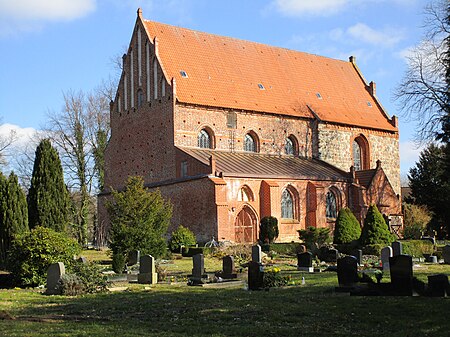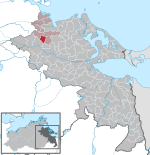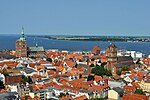Historical Western Pomerania, also called Cispomerania, Fore Pomerania, Front Pomerania or Hither Pomerania (German: Vorpommern; Polish: Pomorze Przednie), is the western extremity of the historic region of Pomerania forming the southern coast of the Baltic Sea, located mostly in north-eastern Germany, with a small portion in north-western Poland.
Western Pomerania's boundaries have changed through the centuries as it belonged to various countries such as Poland, the Duchy of Pomerania (later part of the Holy Roman Empire), Denmark, Sweden, as well as Prussia which incorporated it as the Province of Pomerania.
Today, the region embraces the whole area of Pomerania west of the Oder River, small bridgeheads east of the river, as well as the islands in the Szczecin Lagoon. Its majority forms part of Germany and has been divided between the states of Mecklenburg-Western Pomerania and Brandenburg, with the cities of Stralsund and Greifswald, as well as towns such as Ribnitz-Damgarten (Damgarten only), Bergen auf Rügen (Rügen Island), Anklam, Wolgast, Demmin, Pasewalk, Grimmen, Sassnitz (Rügen Island), Ueckermünde, Torgelow, Barth, and Gartz. The cities of Szczecin and Świnoujście, as well as the towns of Police, Goleniów, Wolin, Międzyzdroje, Nowe Warpno, and (the left-bank part of) Dziwnów are part of Poland. The German part forms about one-third of the present-day north-eastern state of Mecklenburg-Western Pomerania, while the Polish part constitutes the westernmost border areas of the West Pomeranian Voivodeship.
German Western Pomerania had a population of about 470,000 in 2012 (districts of Vorpommern-Rügen and Vorpommern-Greifswald combined) – while the Polish districts of the region had a population of about 520,000 in 2012 (cities of Szczecin, Świnoujście and Police County combined). So overall, about 1 million people live in the historical region of Western Pomerania today.










